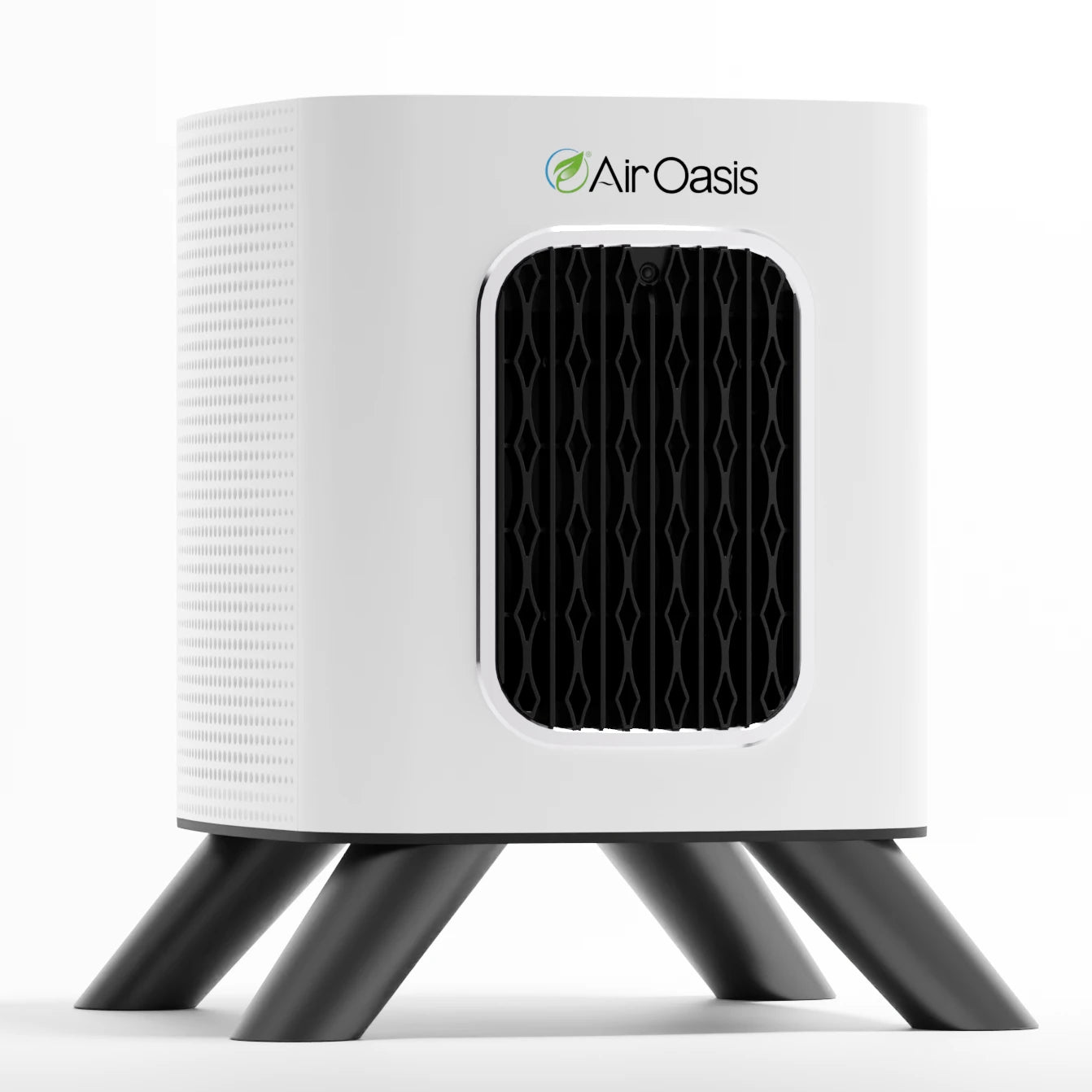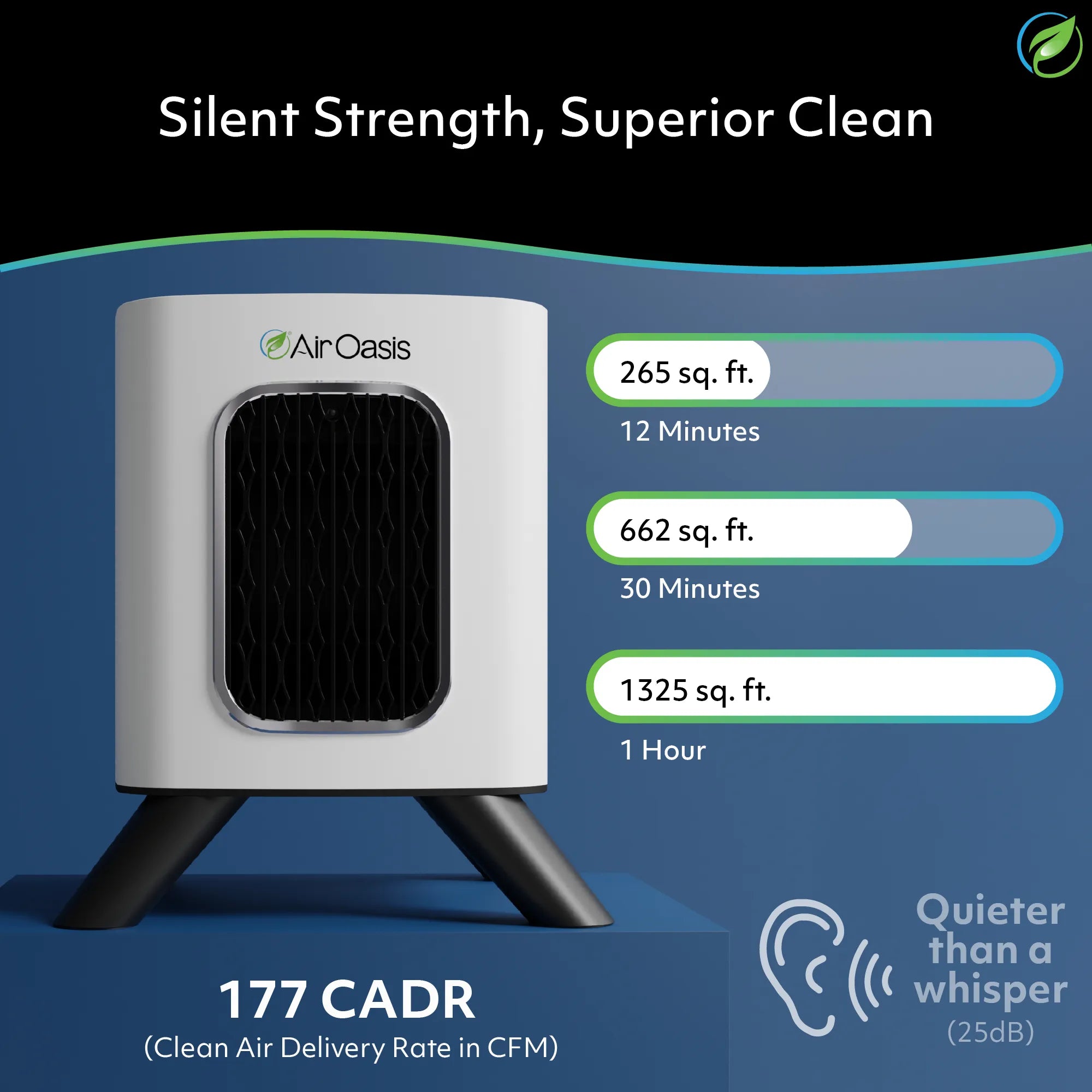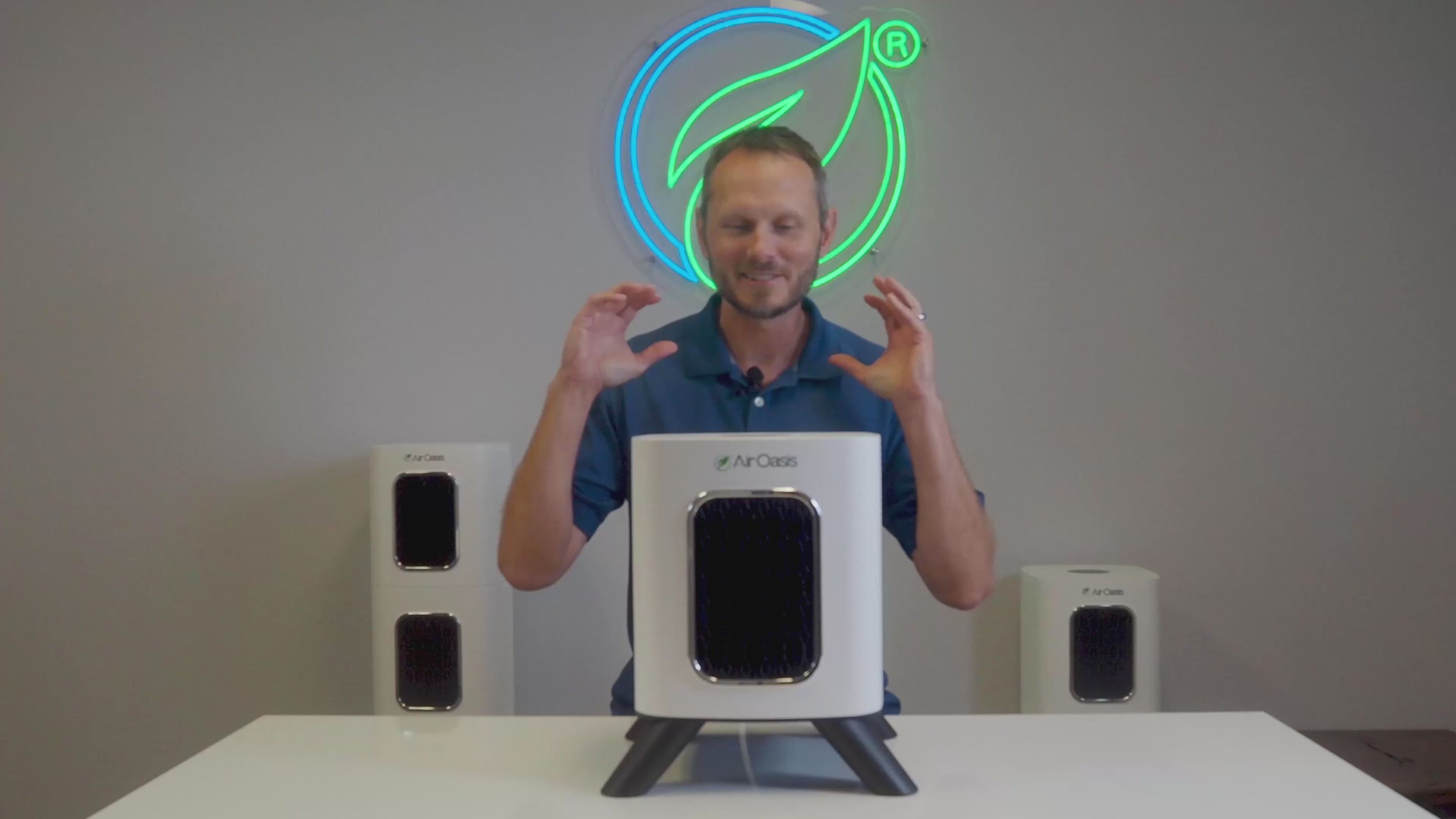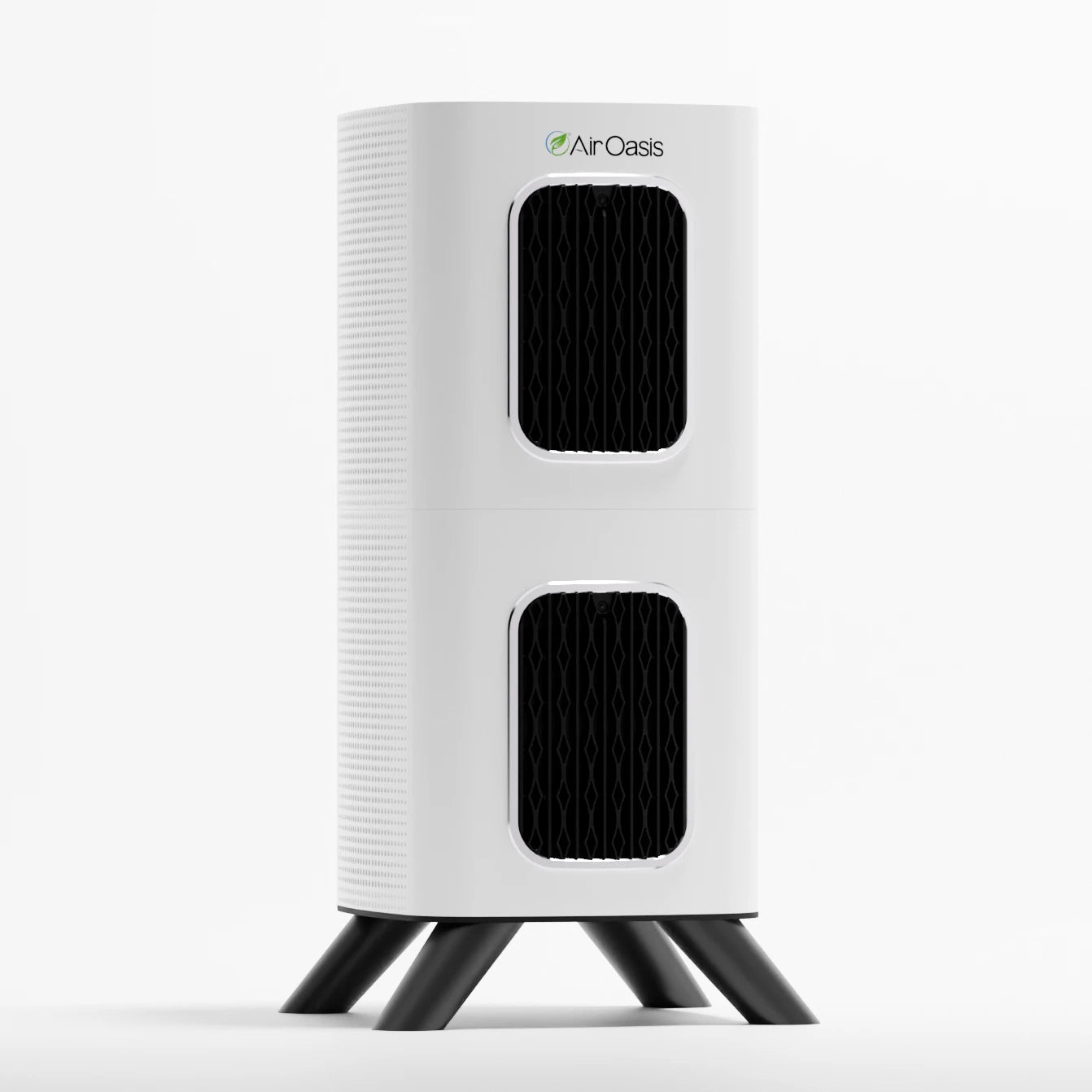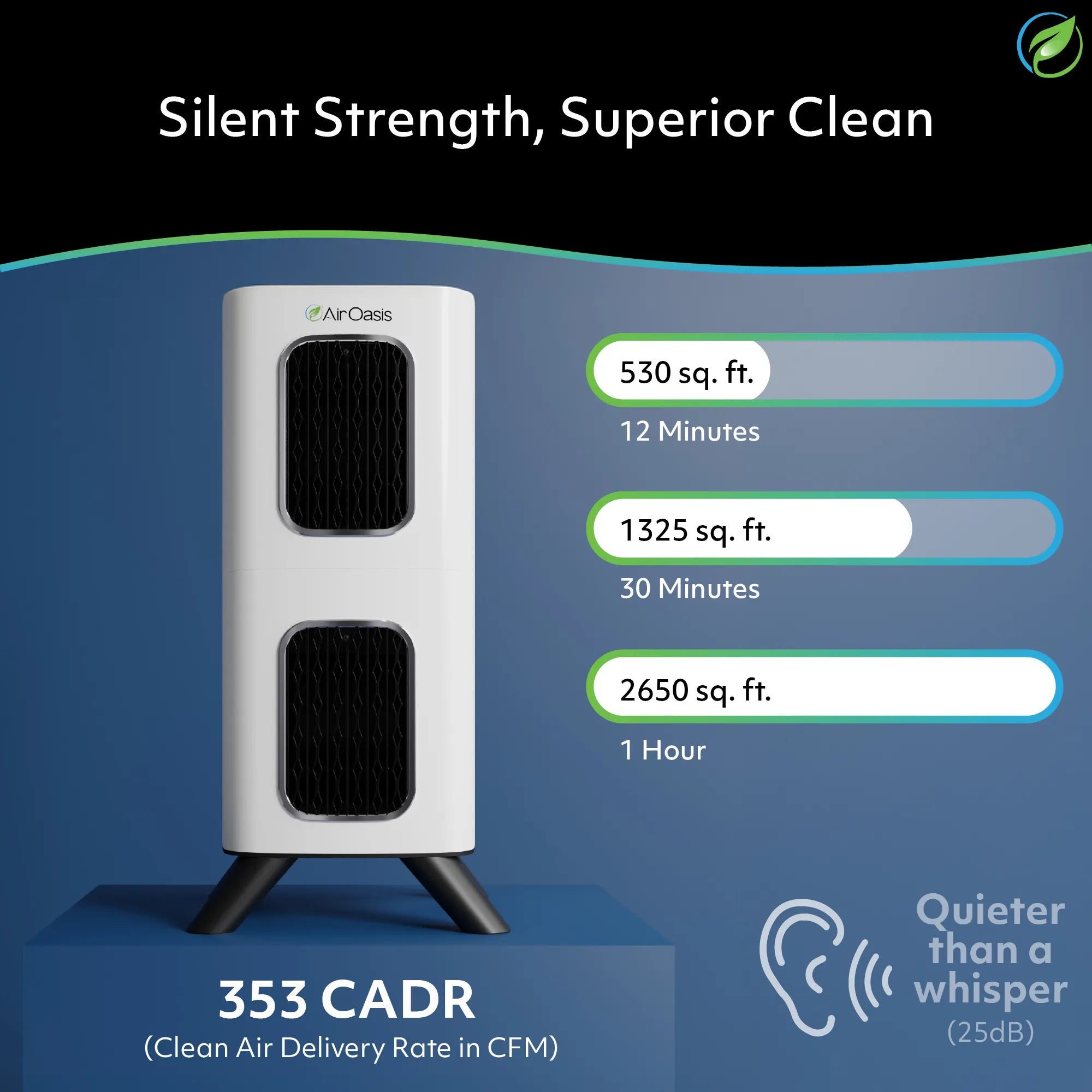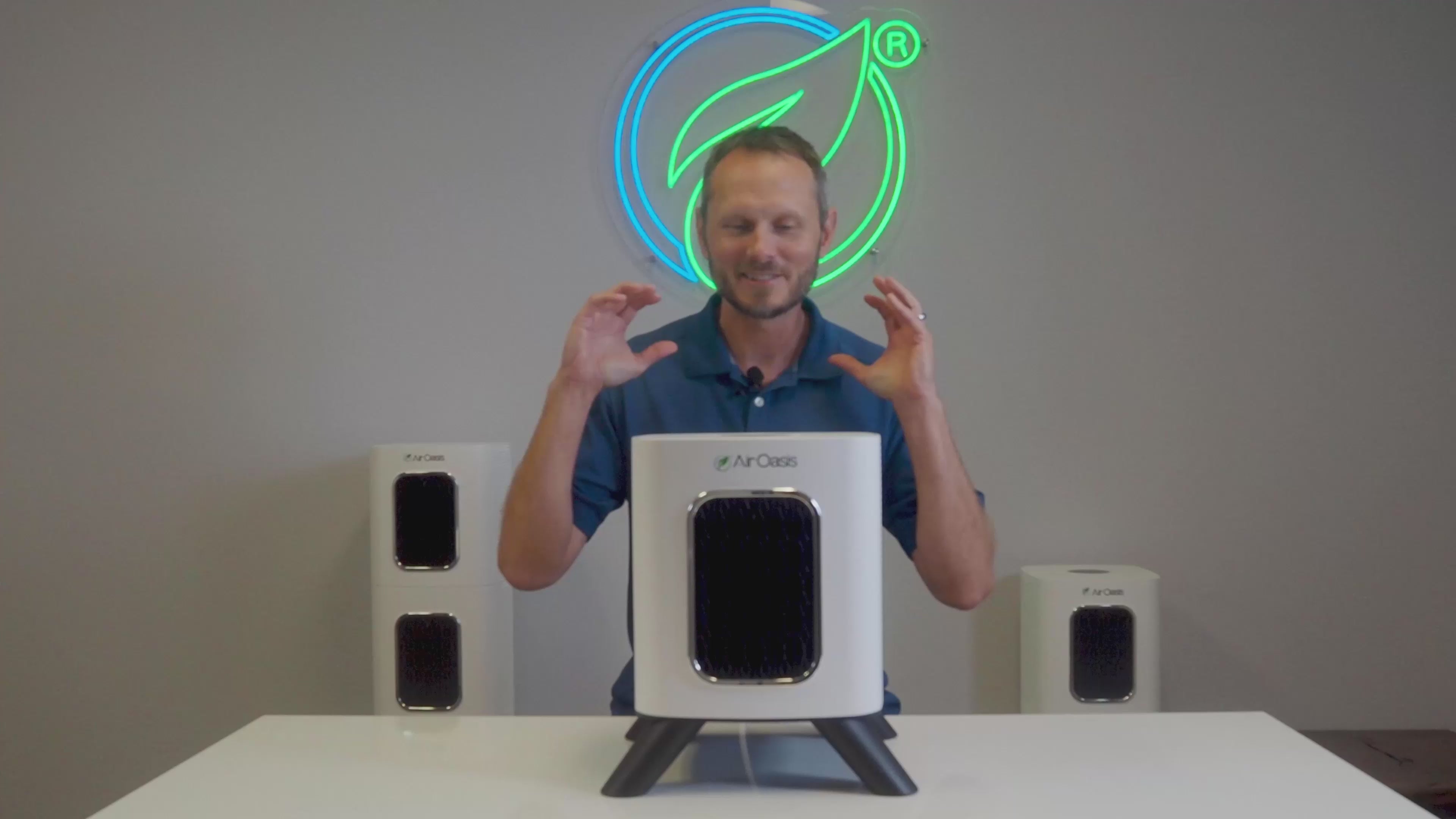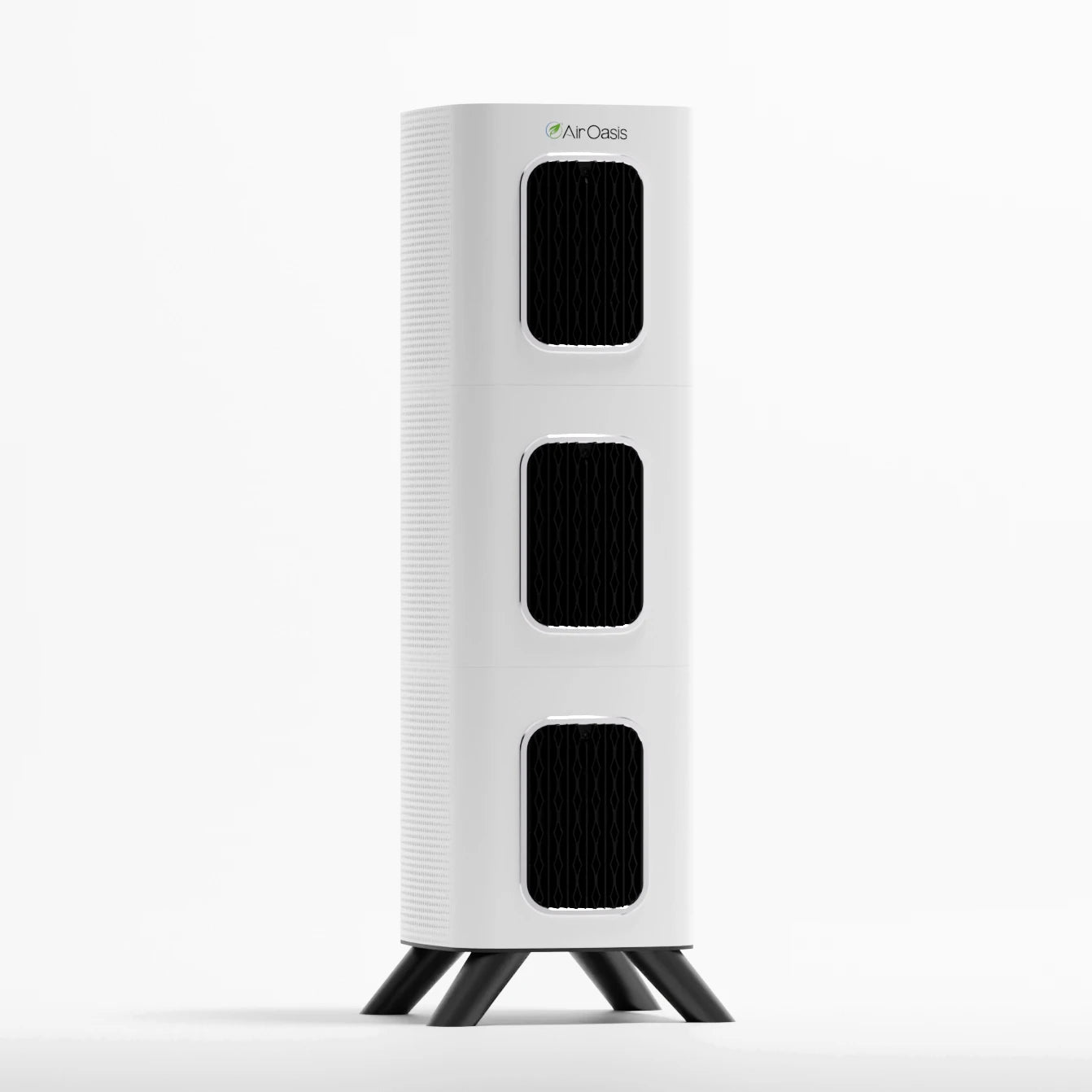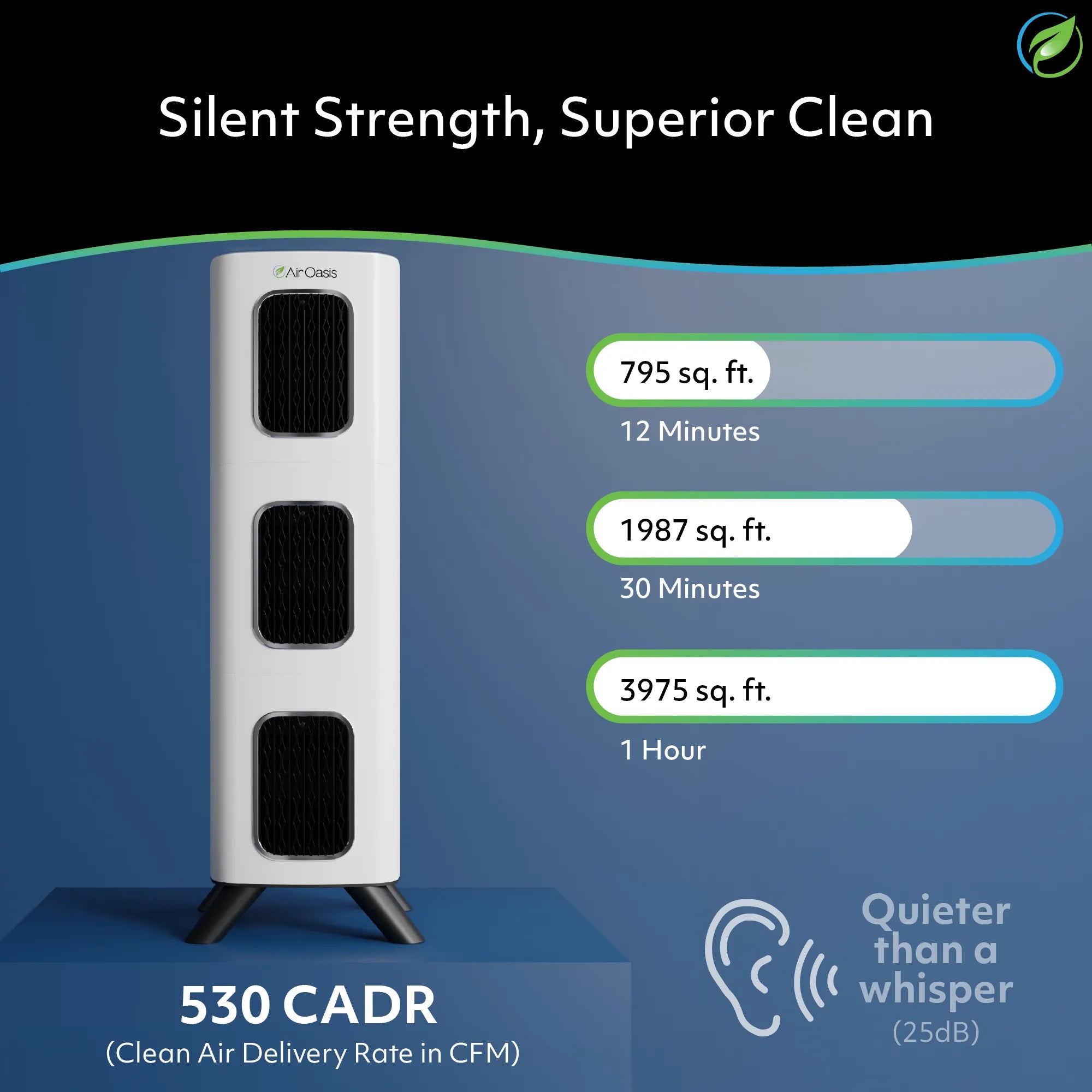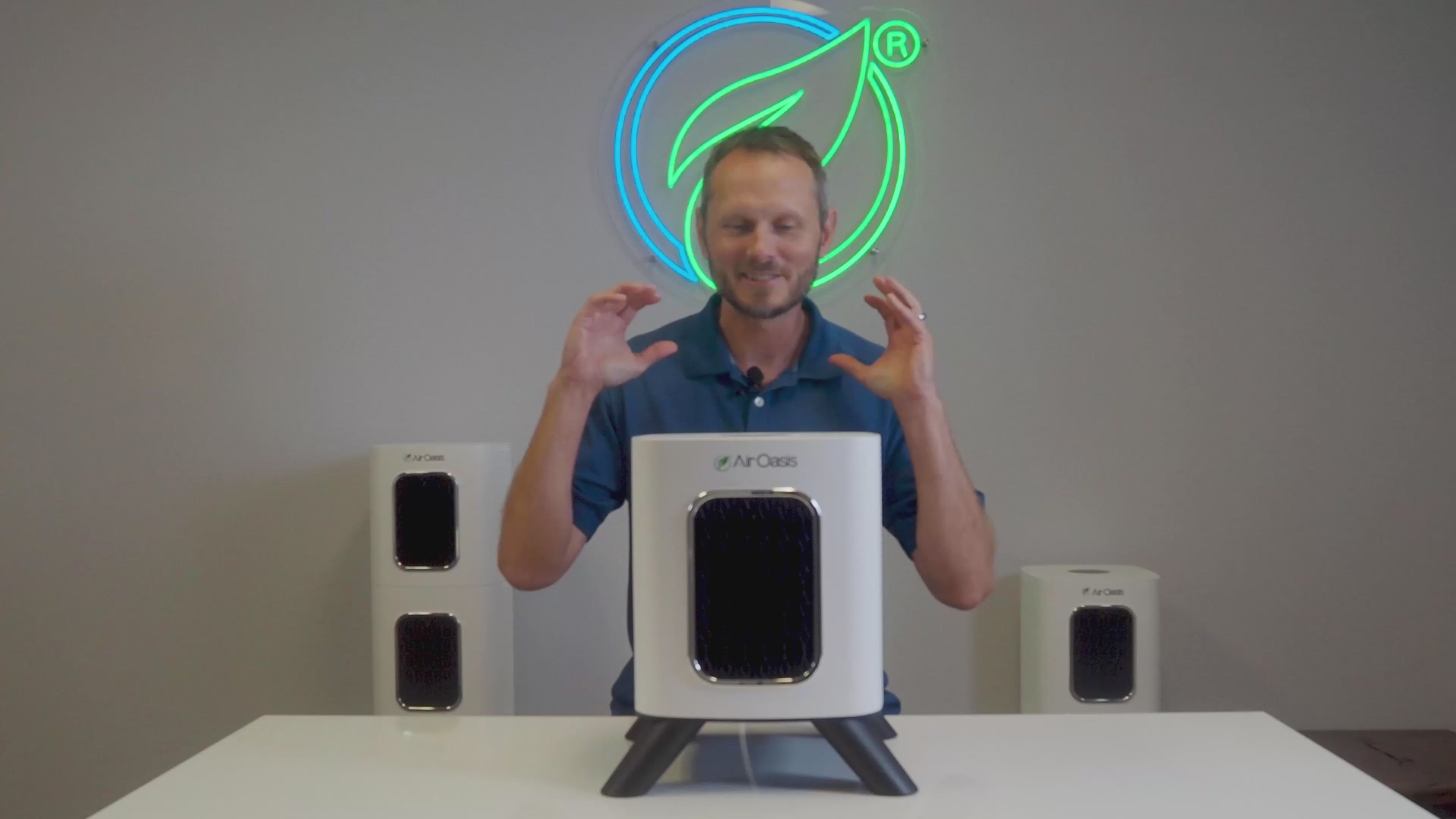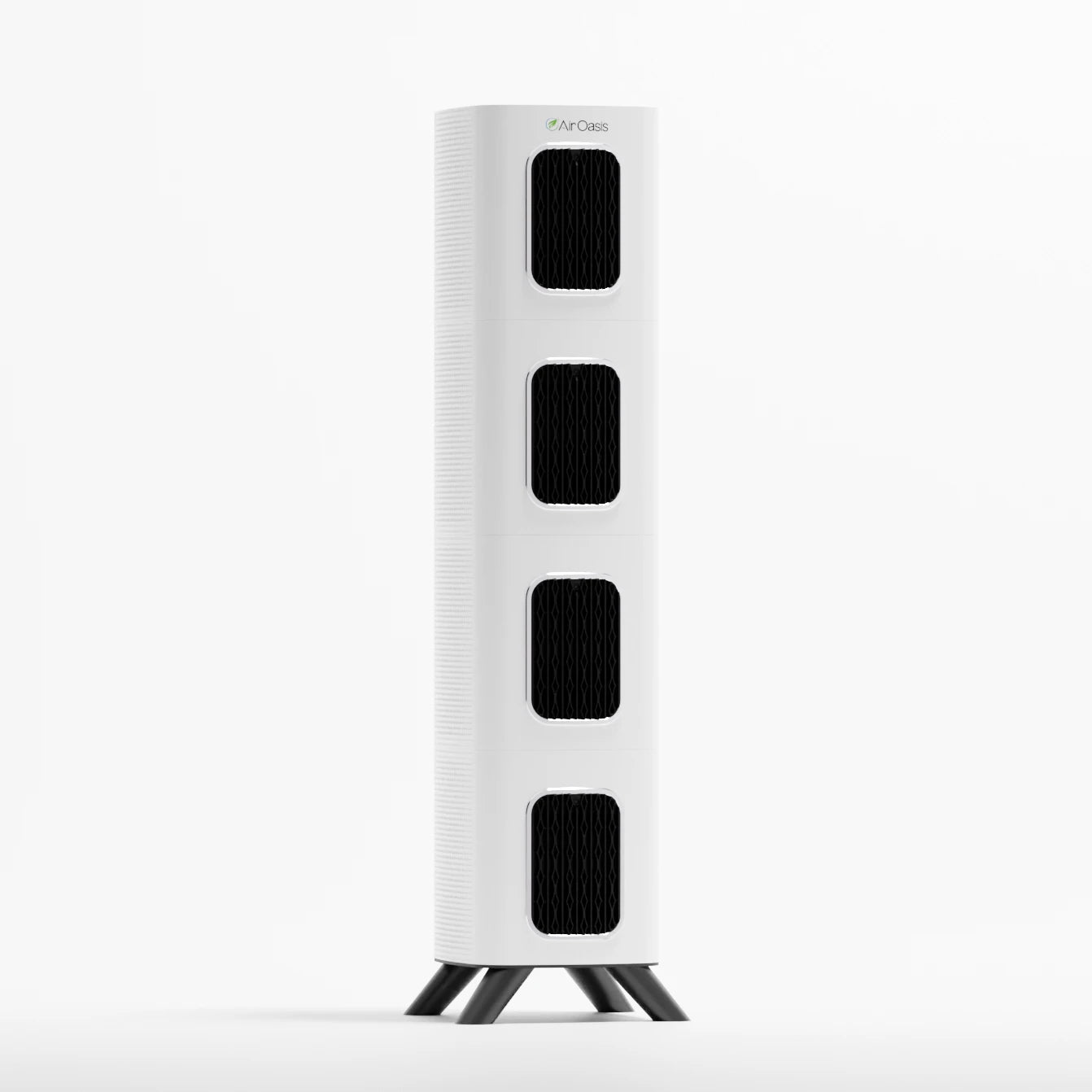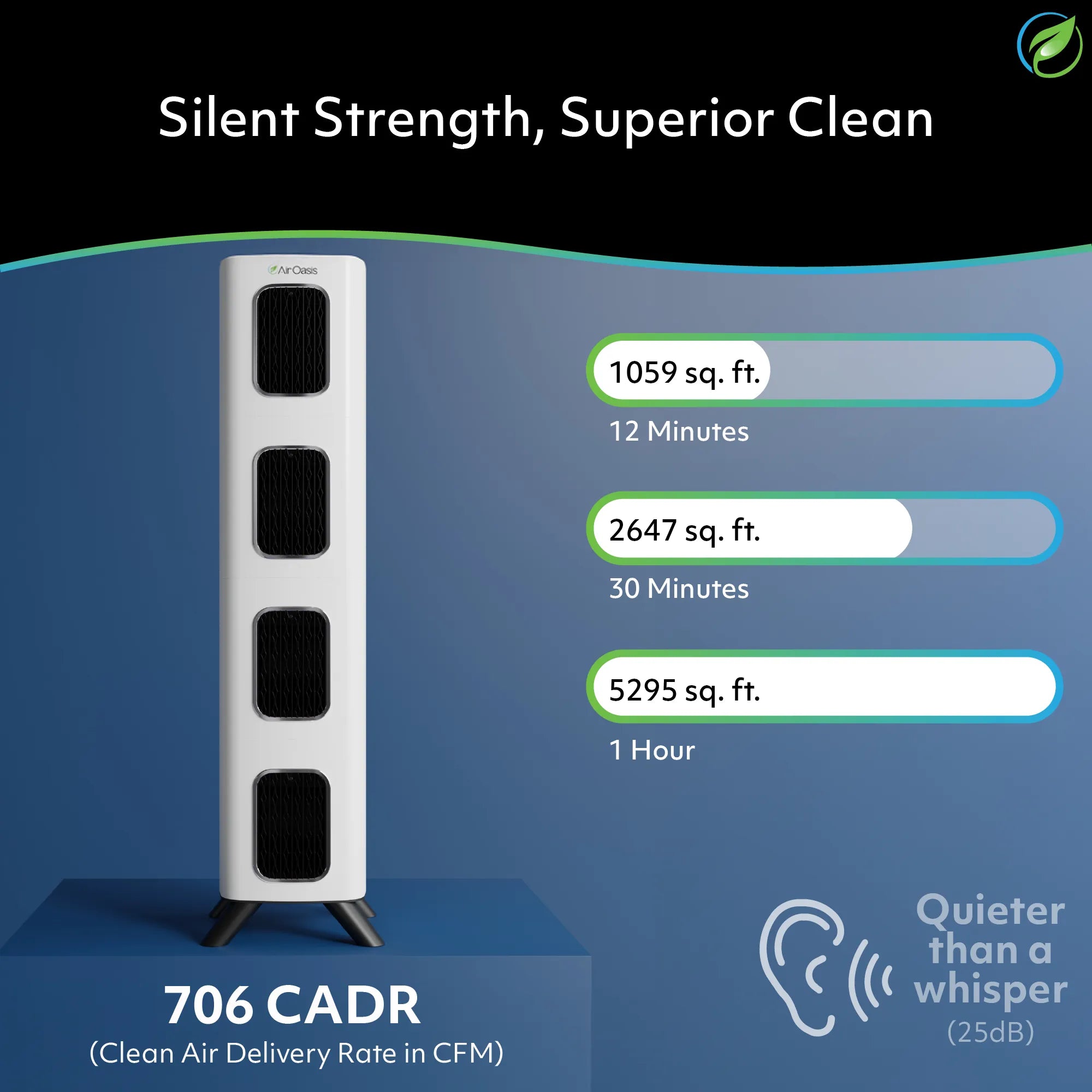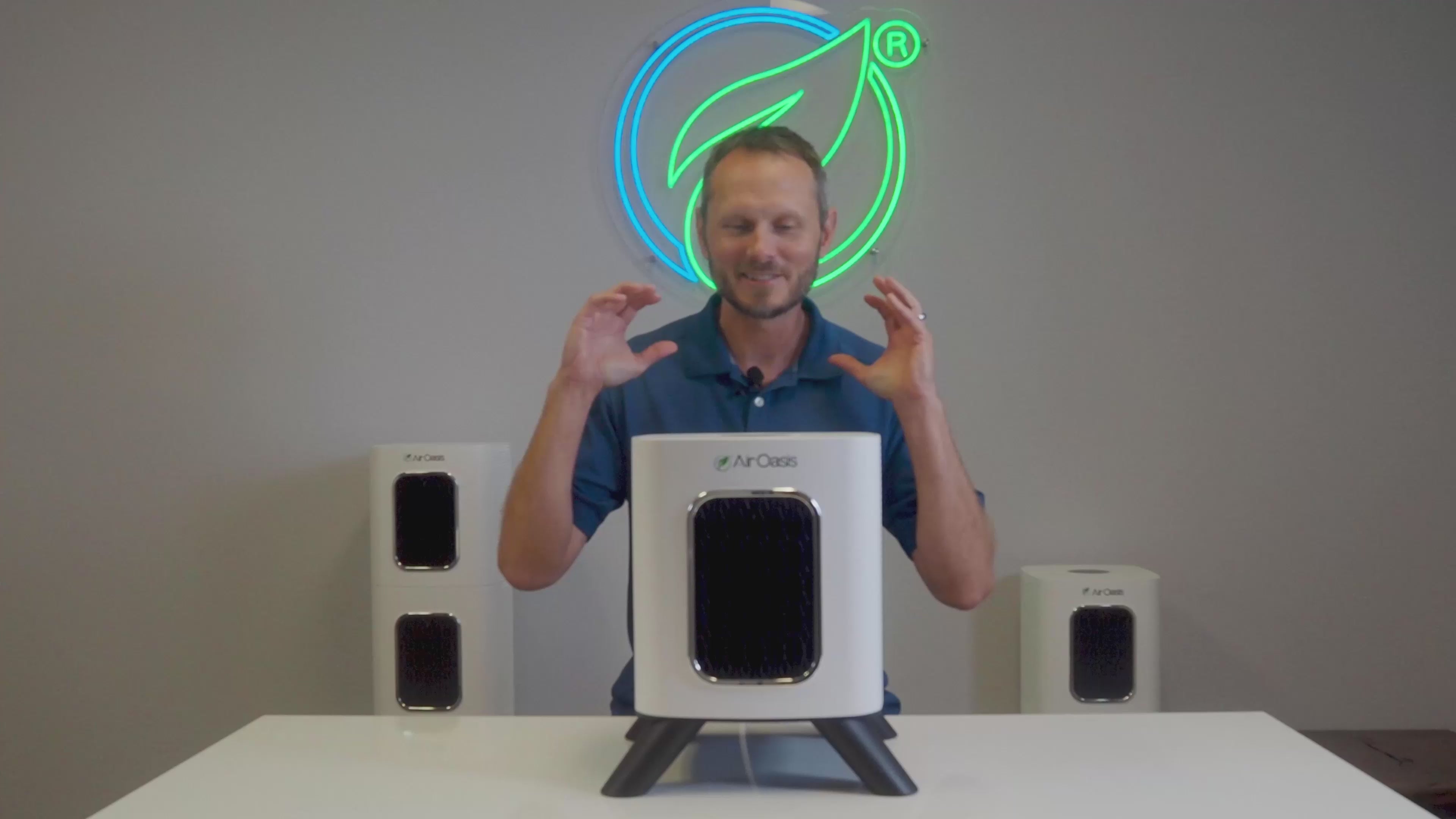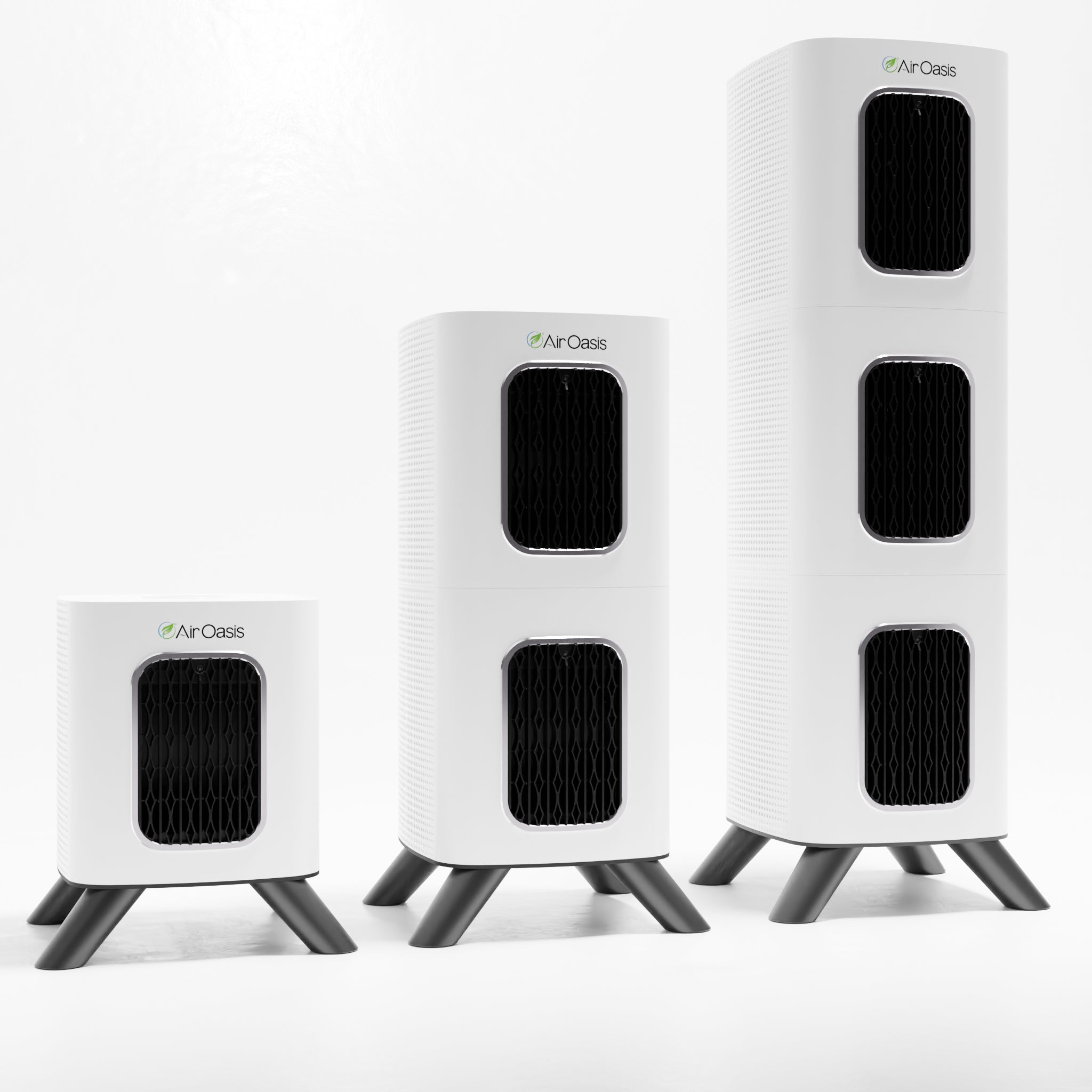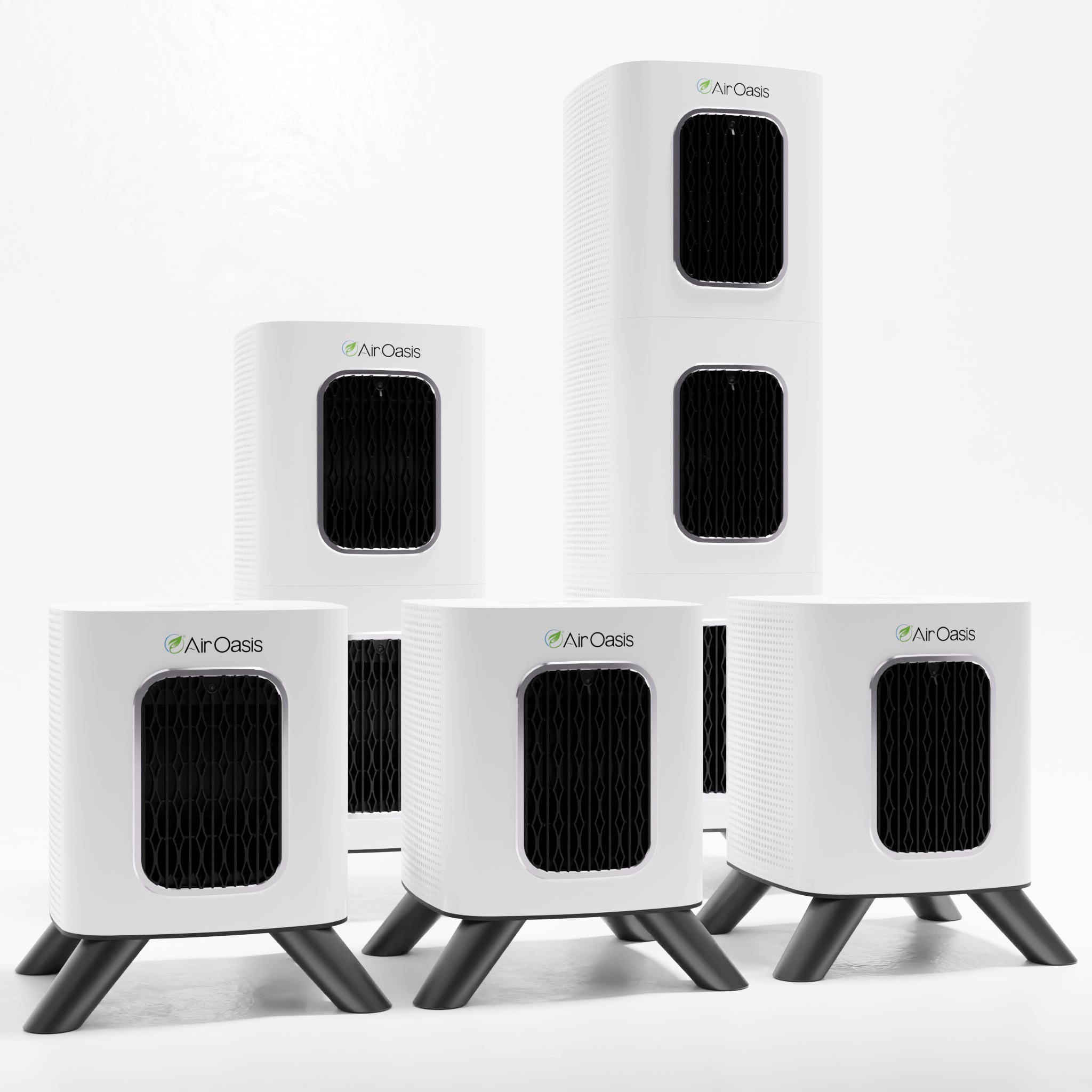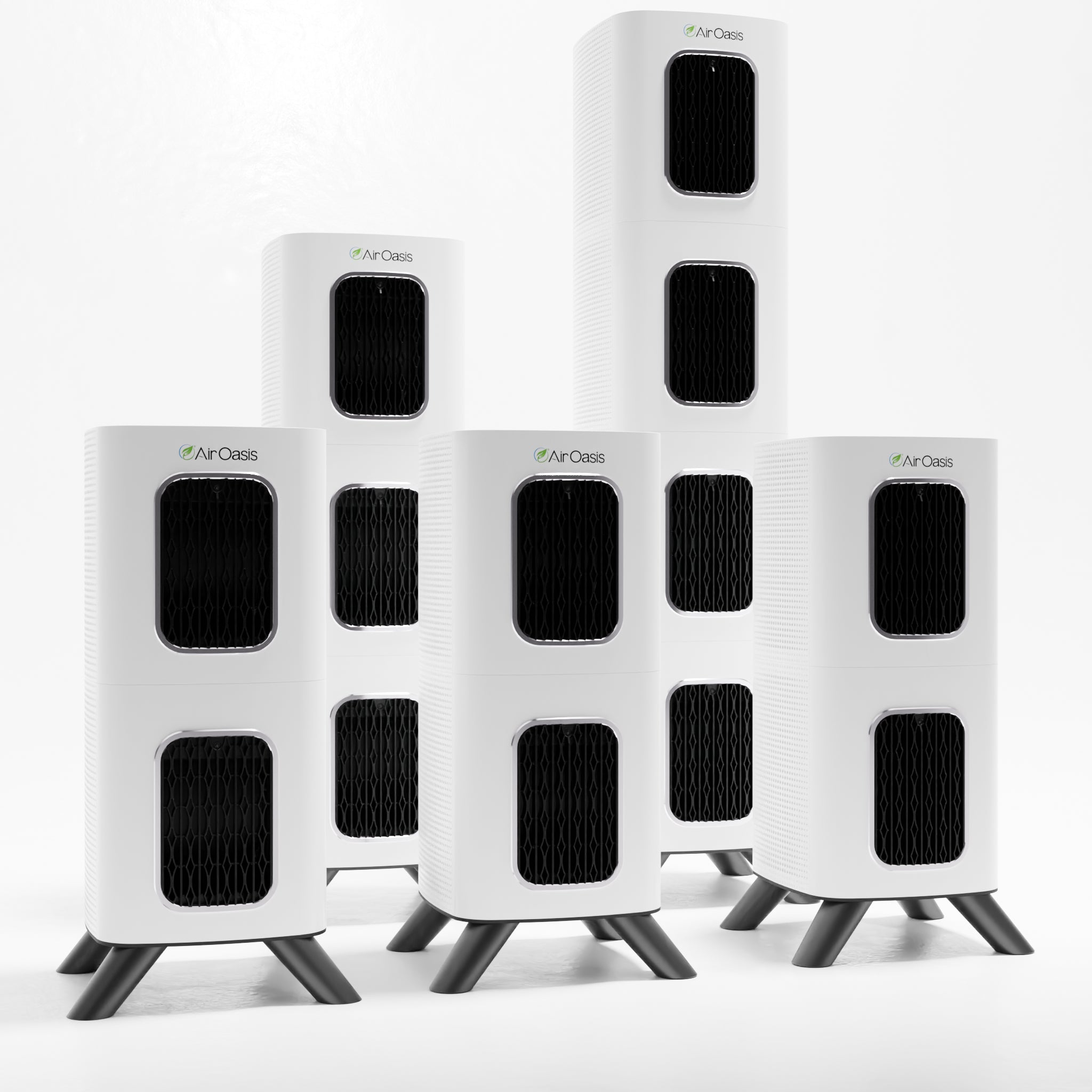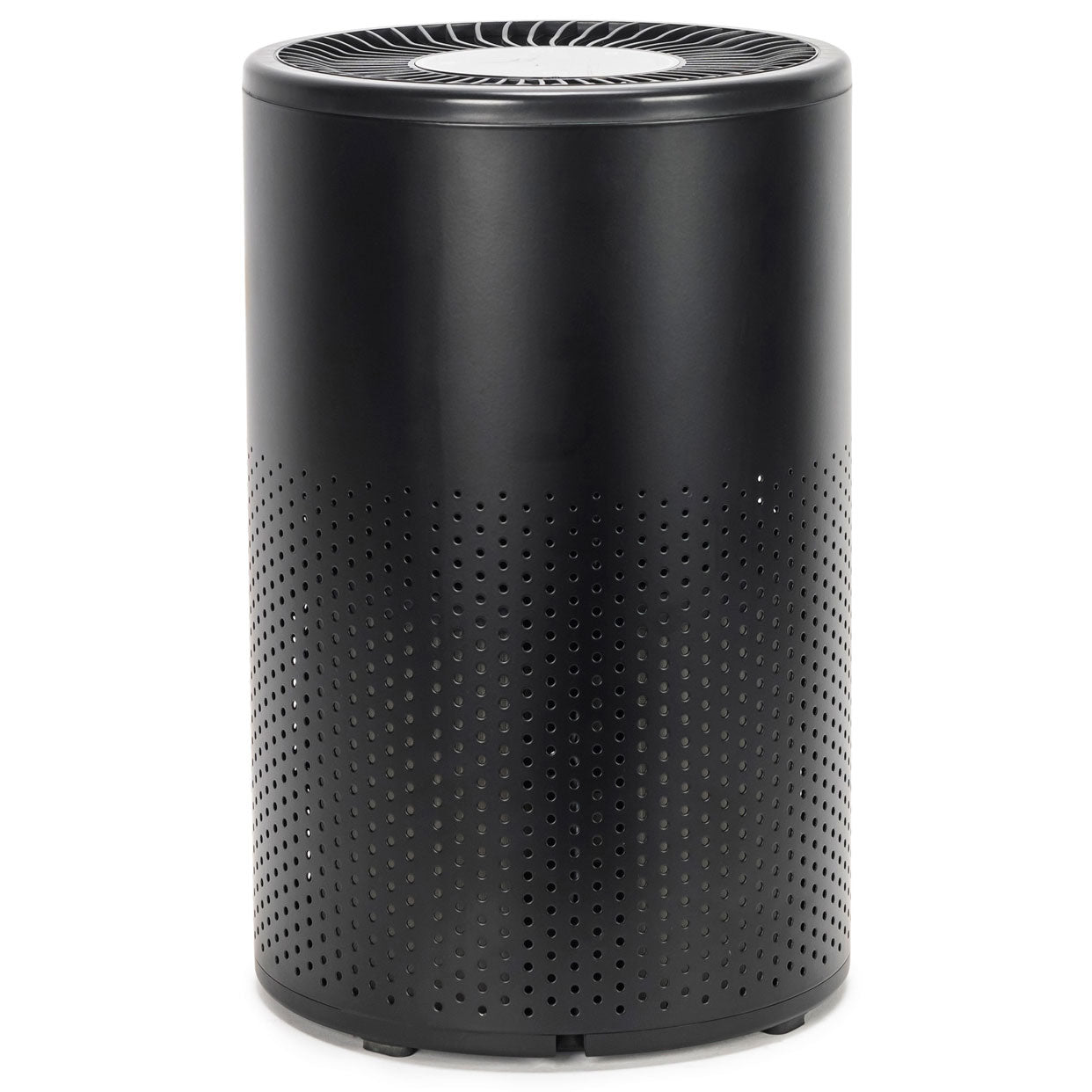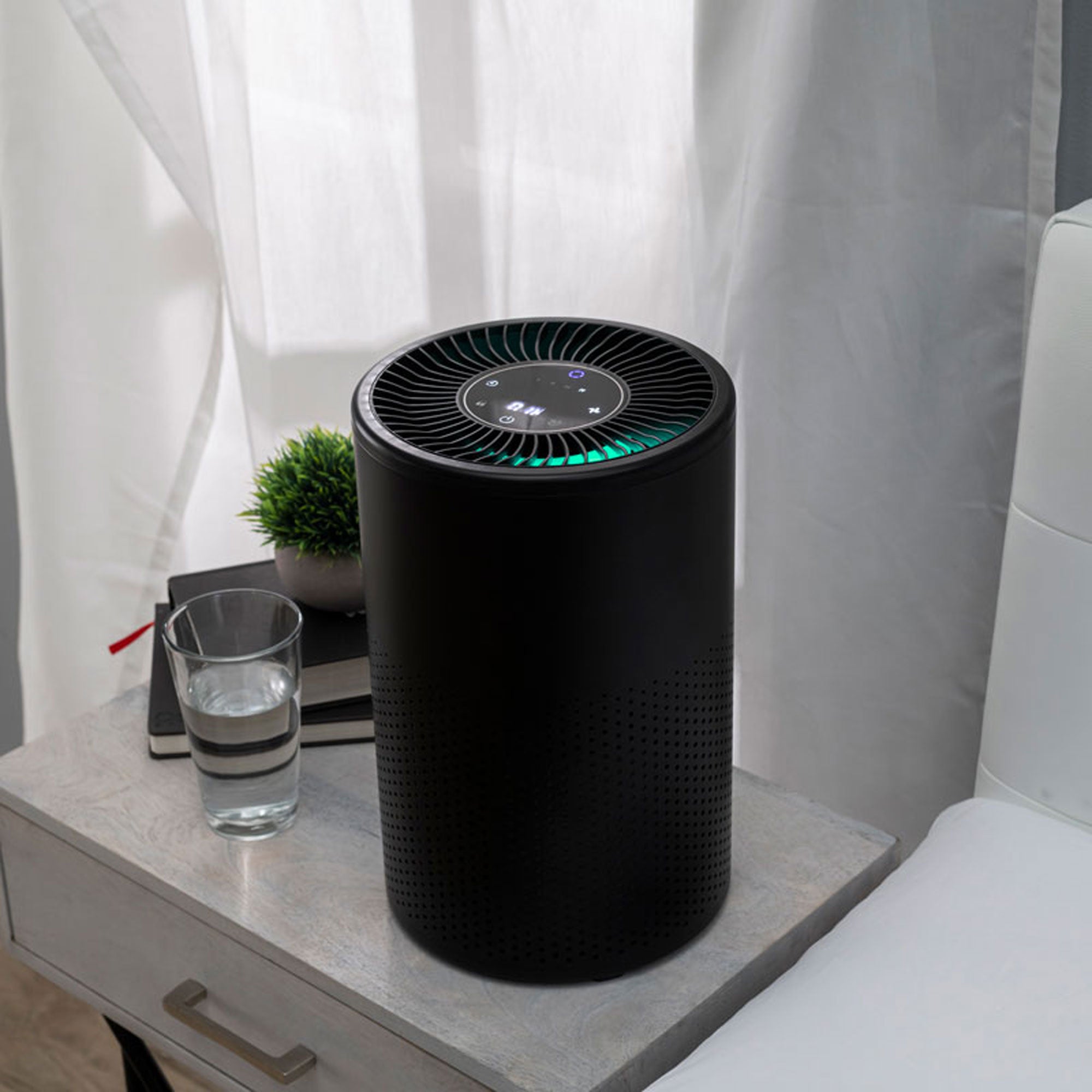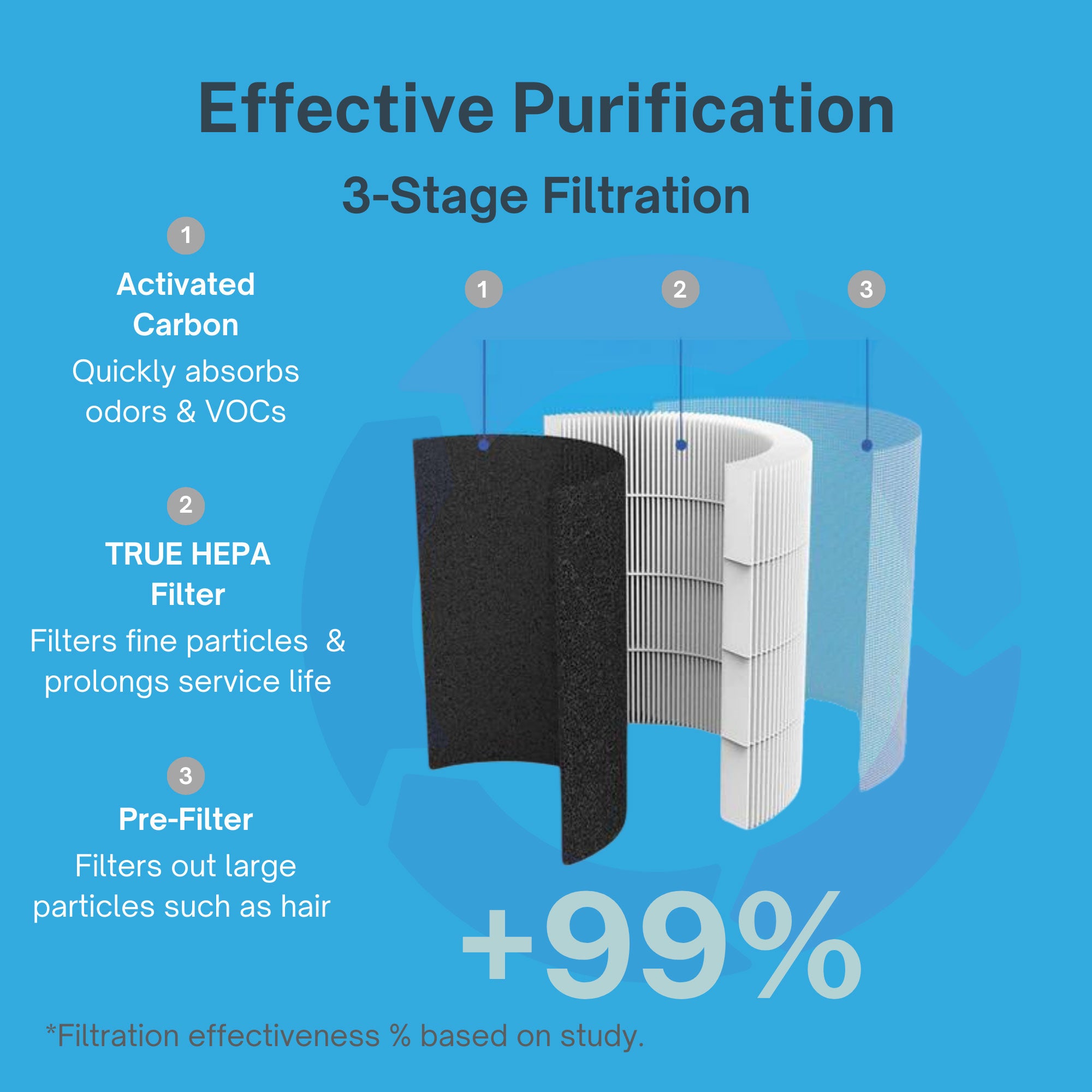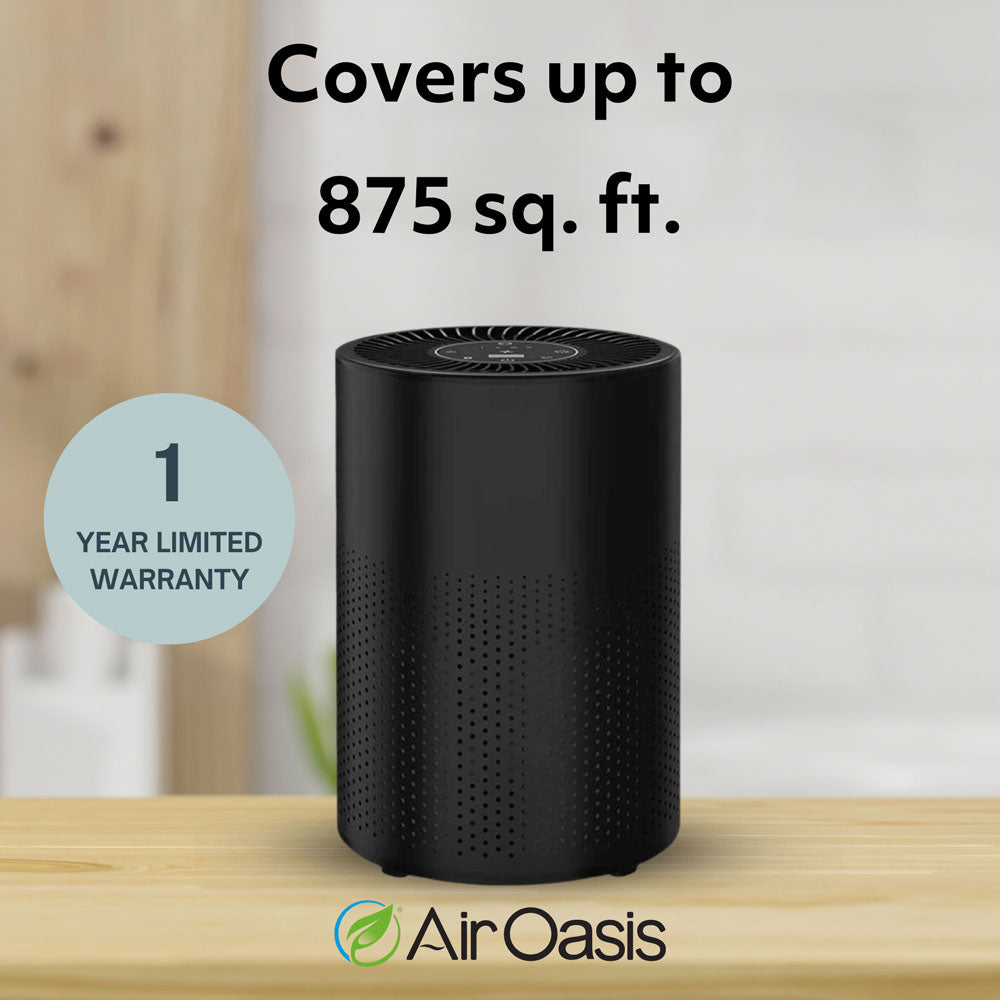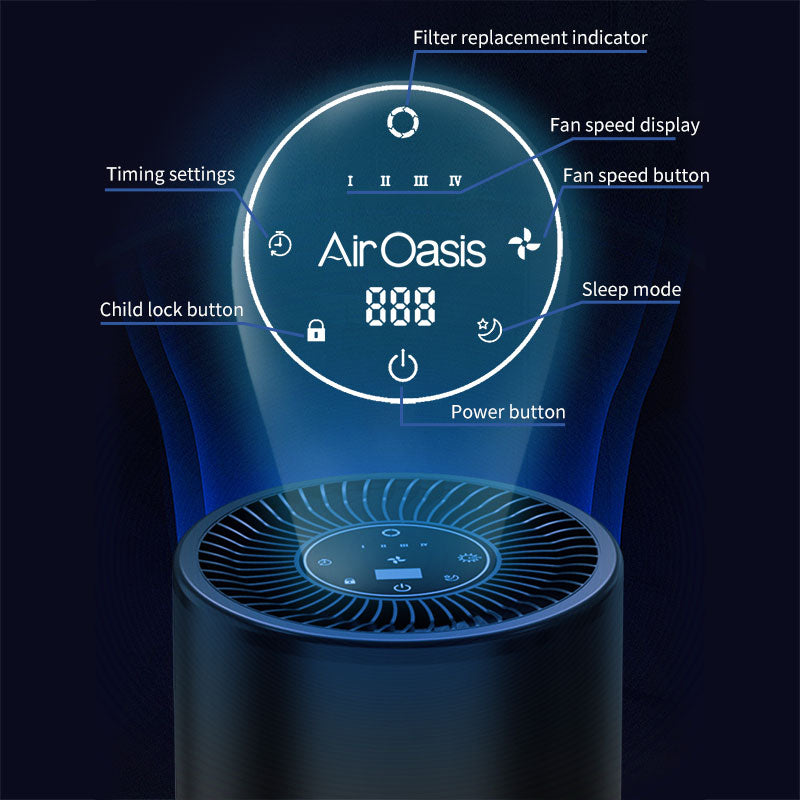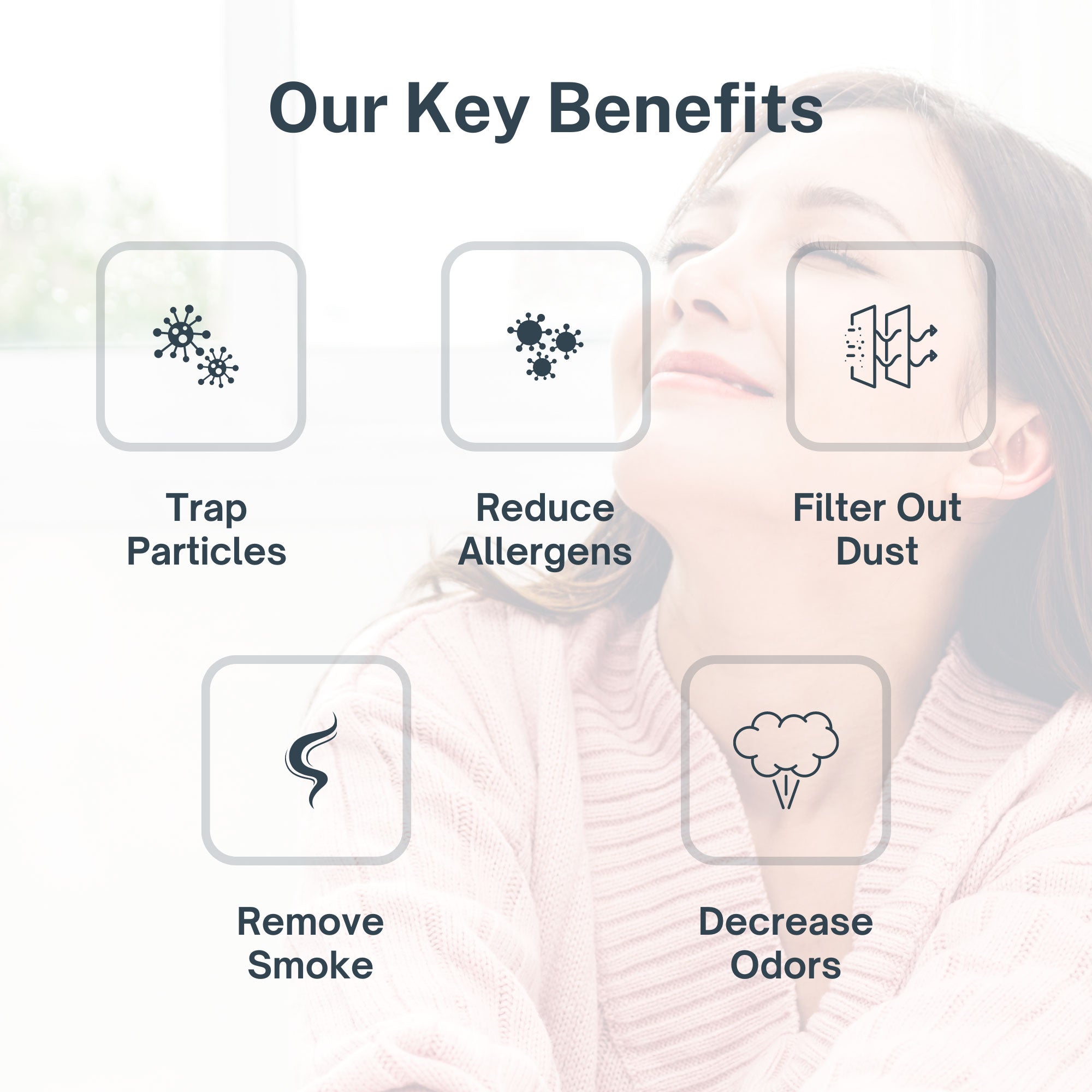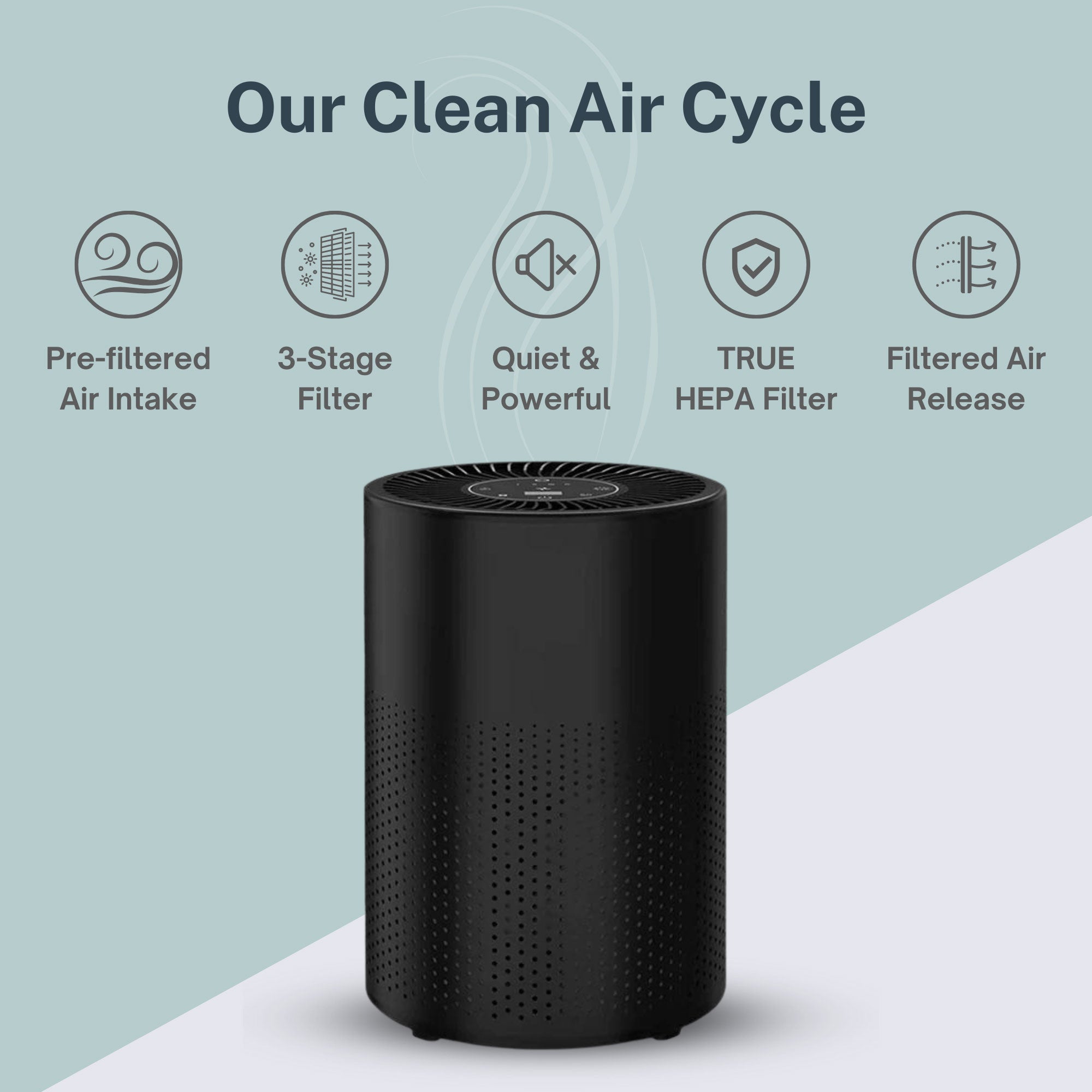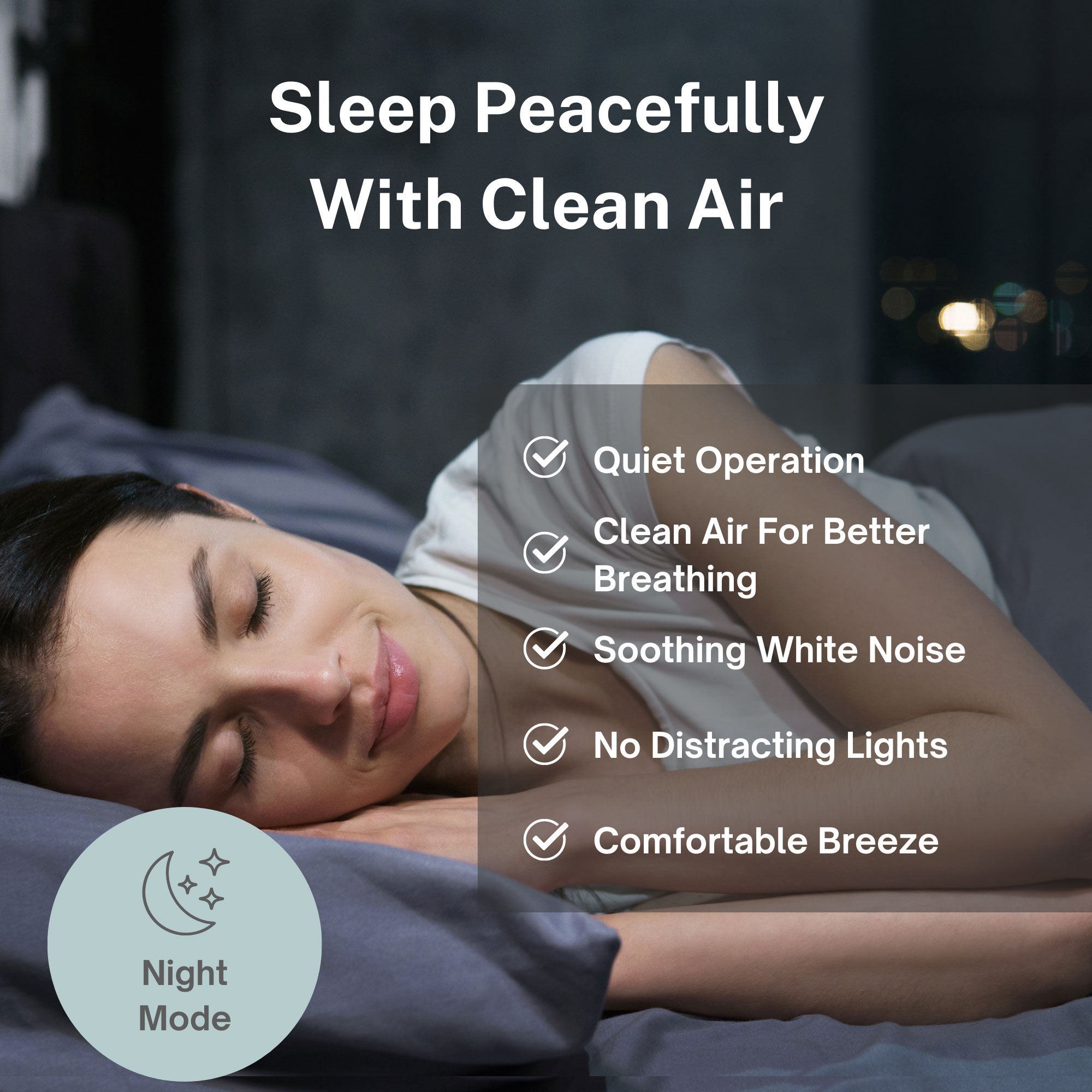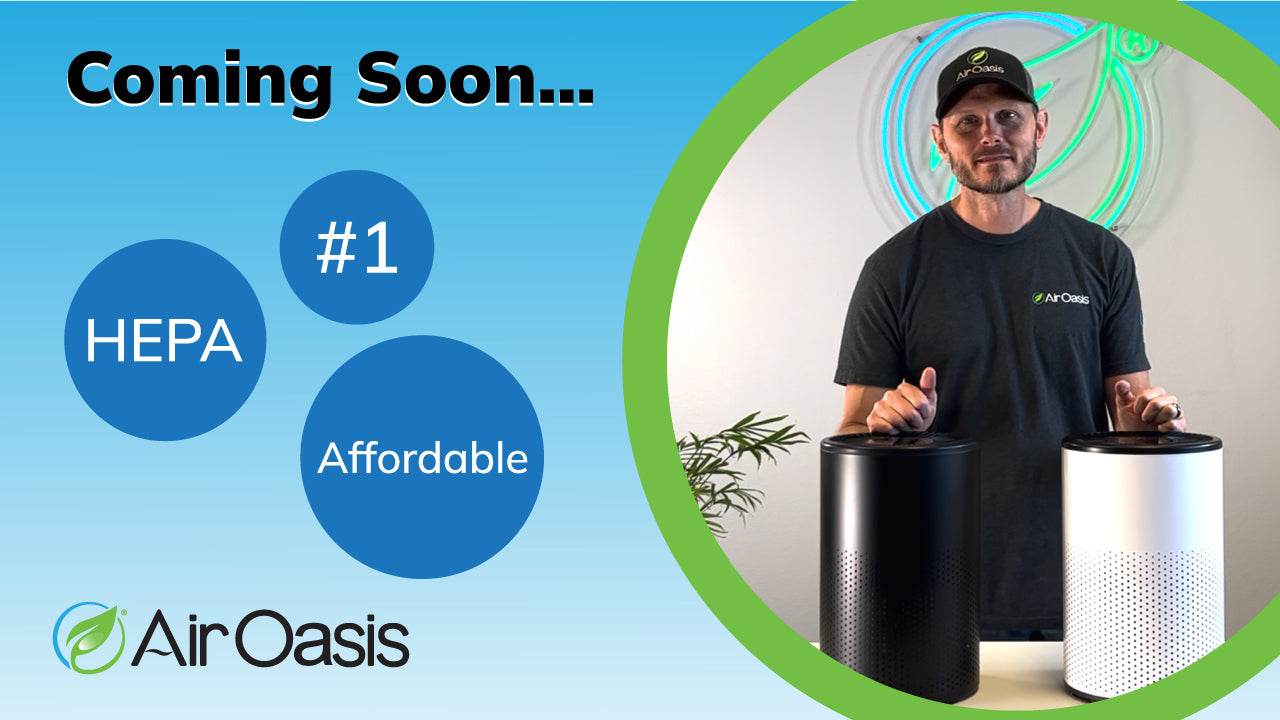Human health is influenced by various factors, including airborne bacteria in built environments where people spend most of their time. It is necessary to monitor and control indoor airborne bacteria for occupational safety and public health. Use of a high-quality air purifier is a proven method for reducing the presence of airborne bacteria.
What Bacteria is Airborne?
Types of airborne bacteria include legionella, other Gram-negative bacteria, endotoxin, Mycobacterium species, and gram-positive non-spore-forming bacteria.
Legionella is a type of vegetative Gram-negative bacterium that survives in freshwater habitats around the world. It can be contracted most commonly from contaminated water spray devices such as humidifiers, fountains, showerheads, evaporative condensers, and waste treatment plants.
Other Gram-negative bacteria are most commonly found in animal facilities but can result in disease in humans. It can also be dispersed through the air from recycling facilities, hospital facilities, wastewater treatment plants, and vegetable and herb processing.
Endotoxin requires repeat exposure which induces allergen-specific airway inflammation, including cough, chest tightness, shortness of breath, wheezing, and fever.
The Mycobacterium species is most commonly known for the role of mycobacterium tuberculosis as the causative agent for human tuberculosis, which causes the spread of pathogenic bacilli through respiratory functions and aerosols.
Gram-positive bacteria are typically disseminated from the oral and nasal surfaces, skin, and hair of humans. In addition to being present in hospital settings, it has also been associated with occupants of water-damaged buildings.
How Much Airborne Bacteria is in the Air?
Airborne bacteria in the air depends mainly on both the indoor and outdoor environment of the area in question. Generally, bacteria found in indoor air are shed by building or home occupants or enter from the outdoor air supply. According to one study, the number of airborne bacteria can range from 0.013 to 1.88 organisms per liter of air sampled. That is, in each cubic meter of air, there are between 860,000 and 11 million bacteria, depending on the environment of the specific air being inhaled.
Illness risk from environmental bacteria increases indoors, especially in buildings or homes where there is an inappropriate number of individuals in the indoor space, causing the bacteria to unnecessarily multiply through airborne transmission.
Sources of Airborne Microorganisms
Concentrations of airborne microorganisms in built environments change depending on the number of human occupancy. Similarly, bacteria found in social and community spaces such as classrooms, offices, and hospitals are mainly associated with human occupancy.
Other sources of indoor airborne bacteria include outdoor environments and building materials. In addition, indoor bacterial concentrations vary based on the makeup of the outdoor environment.
Airborne bacteria from outdoor environments enter indoor spaces through open doors and windows. Indoor bacteria are released into the outer atmosphere in the same way. Most outdoor bacteria are liberated from natural sources such as vegetation and soil surfaces by atmospheric turbulence and marine and freshwater spray sources. The concentration of microorganisms in the atmosphere varies as a function of location, time of year, and time of day. Examples of outdoor airborne bacteria include forests, city streets, grass seed fields, harvesting, fungi, and sewage treatment plants.
Airborne Bacteria and Human Health
There is a wide variety of bacteria in the atmosphere, many of which have consequences for public health. Inhalation of airborne pathogenic microorganisms can cause adverse human health effects, including allergic reactions, infection, respiratory diseases, and inflammation. Bacteria can be dispersed through the air and result in infection following inhalation.
The prevalence of bioaerosols is associated with certain human diseases, including measles, influenza, asthma, allergies, and gastrointestinal illness.
On the other hand, in certain circumstances, the presence of microbes can benefit health as it helps develop a healthy immune system. It can also protect children from developing asthma and allergies.
Airborne Bacteria Transmission
Bacteria have the ability to colonize and grow on a variety of surfaces and liquids when certain factors are favorable, unlike viruses which require a host cell to multiply. Because of its makeup, bacteria can be released into the air from various anthropogenic and natural environments. Infectious bacteria released into the air are easily transported by bioaerosols to susceptible individuals, causing bacterial spread.
Certain bacterial transmissions can be harmful. When pathogenic bacteria spreads, it can cause diseases and illnesses such as strep throat, staph infection, cholera, tuberculosis, and food poisoning. Other species of harmful bacteria can result in cancer, diabetes, cardiovascular disease, and obesity.
Air Purifiers and Airborne Bacteria
There are countless good reasons to use an air purifier, including to get rid of airborne bacteria.
Infectious bacteria become airborne in the same way that viruses do: through droplets and aerosols. Bacteria fragments can also travel on skin cells, dust, and other organic and inorganic materials. A person can develop a bacterial infection after inhaling these particles.
One of the best ways to reduce concentrations of airborne bacteria in indoor air is to improve indoor air ventilation through the use of an air purifier. Improving airflow will drastically reduce the presence of infectious pathogens in your home’s air, improving air quality and overall health.
True HEPA air purifiers are an effective way to reduce airborne bacteria particles in the air. They can capture more than 99% of airborne particulates and improve indoor air quality.
Bi-polar ionization, which is sometimes called cold plasma ionization, is another ion-based technology that proves extremely effective at reducing pathogens in the air. It works by using negatively and positively charged poles to split water vapor into positively charged hydrogen ions and negatively charged oxygen ions. As this happens, airborne particles, like bacteria, are drawn together, become heavy and fall to the ground. Ionization changes contaminants on a molecular level and can disinfect surfaces in addition to indoor air.
Photocatalytic oxidation (PCO) is a technology that uses UV light photons and a catalyst to spur a reaction. This reaction creates long-lasting ions that decontaminate both air and surfaces. PCO is commonly seen in ionic air purifiers, although the technology’s effectiveness varies widely according to brand.
Air Purifiers for Your Health
While the best way to avoid airborne bacterial transmission is to avoid ever coming in contact with it, that is not always possible. Air purifiers provide an effective alternative to reducing the presence of airborne bacteria. With increased airflow, and technologies including HEPA, bi-polar ionization, and photocatalytic oxidation, air purifiers offer a highly effective way to reduce airborne bacterial spread. The iAdaptAir™ uses five technologies to reduce up to 99% of bacteria in the air. Shop it here.





